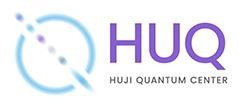
Solid state transistors triggered a revolution in the way we store, compute and communicate information. Half a century after this revolution began a new type of processing has emerged based on quantum instead of classical physics. Solid state devices based on diamond, silicon and other semiconductor systems have been proposed with spin-based quantum bits to form the backbone of the quantum processor, but to date a viable large-scale architecture remains to be demonstrated. We have used ion implantation to insert phosphorus atoms into silicon to explore quantum computer technology based on potentially scalable engineered single donor atom devices. It is now possible to fabricate nanoscale silicon transistors with a channel length (~20 nm) that is comparable in size to the Bohr orbit of the donor electrons (~1.22 nm for Si:P). Our approach is to engineer nano-scale silicon CMOS devices with a single 31P atom implanted with our deterministic doping method [1] that is cited by the International Semiconductor Roadmap for 2011 [2]. Our devices have now proved the ability to perform single shot readout of the donor electron spin [3]. We use electron spin resonance to drive Rabi oscillations to show a coherence time (T2) exceeding 200 µs suggesting a single P donor electron spin can be used as a long-lived quantum bit [4]. The same devices show P nuclear spin coherence times for ionized donors of 60 ms [5]. New devices built from enriched 28Si, described as a "semiconductor vacuum" because of the absence of decohering background spins, offer even longer coherence times. This presentation describes our approach to take this technology to the next stage by building deterministic arrays of single atoms. We seek to exploit the remarkable coincidence that the range over which it is possible to couple electrons in the solid state is comparable to the straggling range of shallow donor atoms implanted <20 nm deep into a semiconductor wafer. This presentation reviews the challenges of building a large scale quantum device for computation and communication that may ul timately lead to the quantum internet of the mid-21st C.
[1] DN Jamieson, C Yang, T Hopf, SM Hearne, CI Pakes, S Prawer, M Mitic, E Gauja, SES Andresen, FE Hudson, AS Dzurak & RG Clark, Controlled shallow single-ion implantation in silicon using an active substrate for sub-20-keV ions, Appl. Phys. Lett. 86, p202101 1-3 (2005)
[2] International Technology Roadmap for Semiconductors, Emerging Research Materials www.itrs.net/Links/2011ITRS/2011Chapters/2011ERM.pdf
[3] JJ Pla, FA Zwanenburg, KW Chan, H Huebl, M Möttönen, CD Nugroho, C Yang, JA van Donkelaar, A Alves, DN Jamieson, CC Escott, LCL Hollenberg, RG Clark & AS Dzurak, Single-shot readout of an electron spin in silicon, Nature 467 687 (2010)
[4] JJ Pla, KY Tan, JP Dehollain, WH Lim, JJL Morton, DN Jamieson, AS Dzurak & A Morello, A single-atom electron spin qubit in silicon, Nature 489 541 (2012)
[5] JJ Pla, KY Tan, JP Dehollain, WH Lim, JJL Morton, FA Zwanenburg, DN Jamieson, AS Dzurak, A Morello, A high-fidelity single nuclear spin qubit in silicon, Nature 496 334 (2013)
This research was conducted by the Australian Research Council Centre of Excellence for Quantum Computation and Communication Technology (project number CE110001027 and the US Army Research Office (grant number W911NF-08-1-0527). We acknowledge the collaborations of Changyi Yang, Andrew Alves, Jeff McCallum (University of Melbourne), Andrew Dzurak, Andrea Morello, Fay Hudson (UNSW) and Thomas Schenkel (LBNL).

